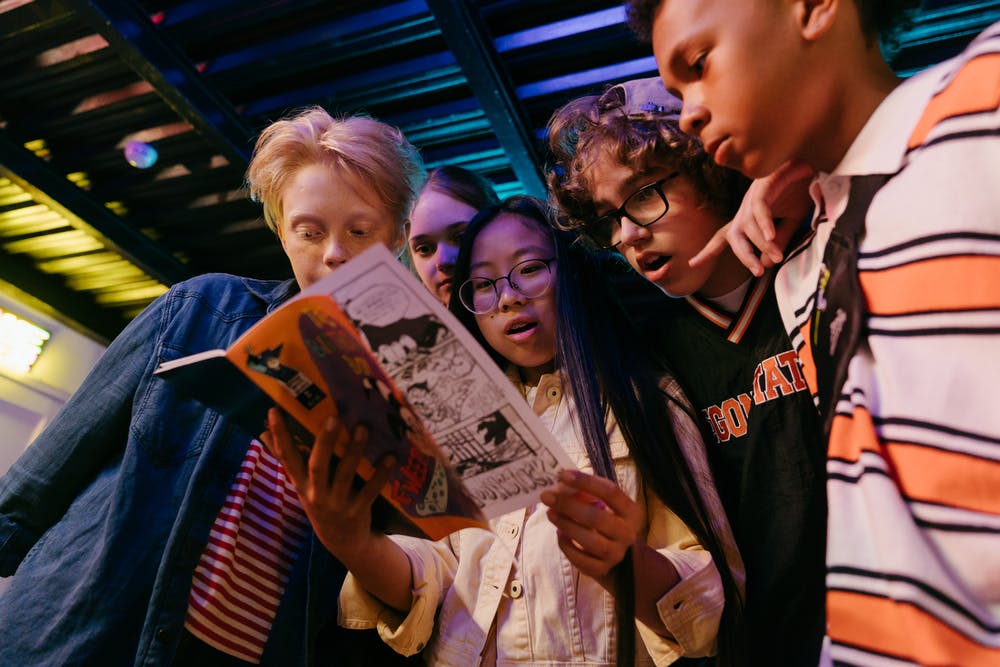Wow, what a learning experience. We learned how to screencast which is where you can capture a video of your own computer screen and narrate over to explain concepts, teach, and share ideas. I have done a screencast and created the most basic how to video called: Brightspace for dummies. I have included the pen tool, the pointer tool, a pause and a multiple choice question with a pause. This is for those people that prefer to digest new tech info in tiny bites (bytes. lol)
Check out our what we learned from our cool teacher.
I absolutely believe that the H5P interactivity tools we have worked with to create the above interactive video would be useful for me as a teacher creating grade 4 to 6 level videos for teaching. Being able to insert pauses in teaching videos to highlight important points and including multiple choice questions to have students actually use the new knowledge so that it becomes embedded in their long their long-term memory is very helpful especially if classes go online or have an online component in the future. This may also help individualize instruction so that students who need less teacher support or intervention would be able to work more independently or in groups from an interactive video while the teacher spends time with other students who may need more one-on-one face-to-face attention.
In a grade 5 class you could use video or audio editing as the assignment medium for “Literature Circle” reading groups to summarize, explore, make predictions, and interact more deeply with the text by asking questions and having small group discussion. This exercise could be done and uploaded as a video whereby the students then cooperatively insert pauses for other students to review and contemplate as well. This is a cross curricular activity as it promotes reading and engagement with text as well as engagement with the core competencies and practice in technology knowledge.

Multimedia learning theory explains how by having audio text as well as written text at the same time as input, it overwhelms our working memory and decreases learning and decreases retention of the information; therefore, when creating effective instructional videos and tutorials it would be better to narrate over an image of just a simple picture without too much text or to put text next to a picture on the screen and not dictate simultaneously. So the message is to keep it simple; either audio text or a visual text at a time, not both. As I reflect on our one class that is offered fully virtual this semester I can see how understanding multimedia learning theory could vastly improve the lecture delivery in this course because I have felt that I want to just close my eyes and listen to the teacher talk because she is reiterating the written text on the screen and it’s too much input and now I know why I feel that way. It’s great to understand the underlying reasons behind why we prefer to learn in certain ways and it truly will help me in the future as a teacher to keep this theory in mind.
A flipped classroom is a classroom where most of the didactic lecture teaching would be given as pre-class homework assignments via videos and online text I assume. Once students arrive in class that would be where most of the active learning (Doing) would take place. As opposed to traditional classes where a teacher would give a lecture in class and students will be sent off individually to do their homework and engage with the material and content. The flipped classroom idea seems to me that it would work extremely well for middle school or high school but would pose potentially an issue for equity access to technology to work in this way. In elementary grades it would likely be difficult to get students to take on the responsibility and initiative of pre-class learning necessary to have this be a successful format.
Let me know your favourite ways to use multimedia in your elementary classrooms or what you’ve tried.
Thanks for sharing Elizabeth! I had not thought of using this for differentiate instruction and I think that is a powerful point to consider. It could be a little (or a lot…who knows) more work for the teacher to provide two types of instruction for the same lesson, but the students who have shown that they 1) have a good grasp of material and 2) can stay on task should have this opportunity to take responsibility for their learning. And the literature circle; good cross-curricular application or this learning tool. I have heard from practising teachers that audio exhibits of learning are preferred by students oftentimes. Cheers